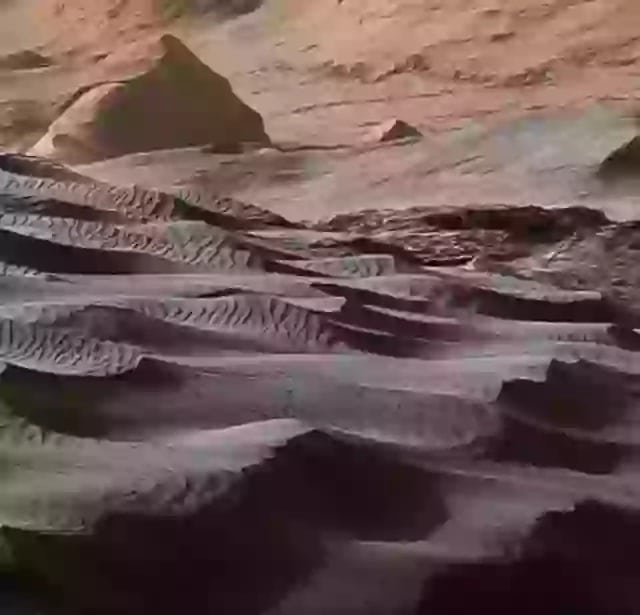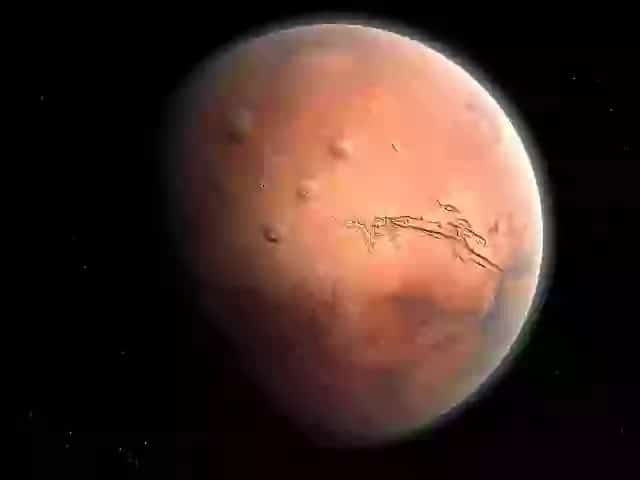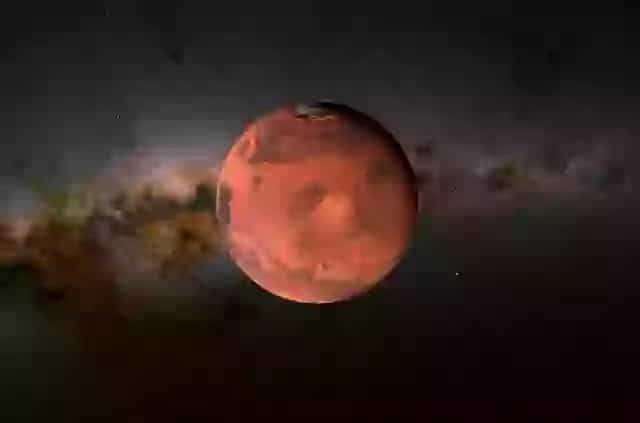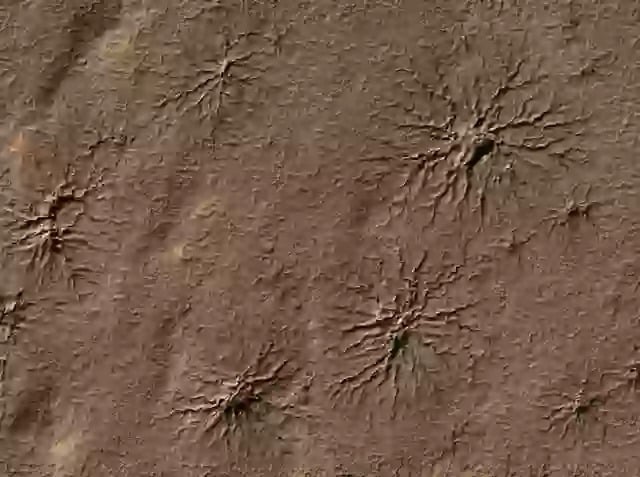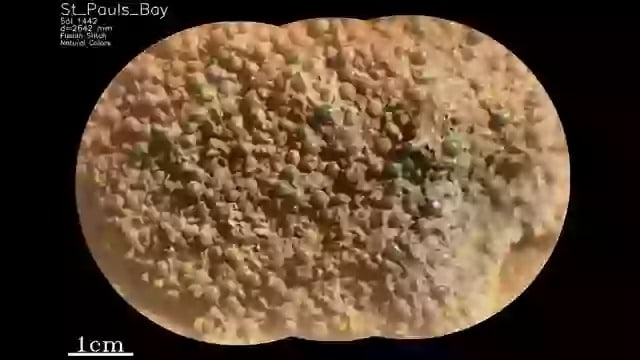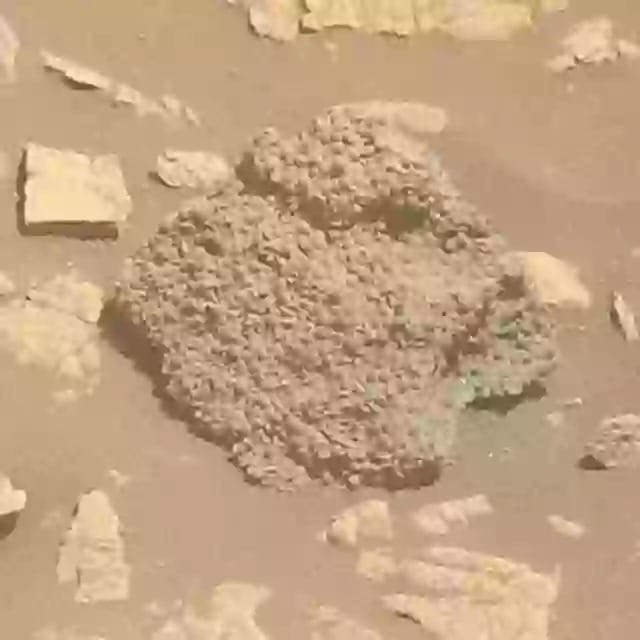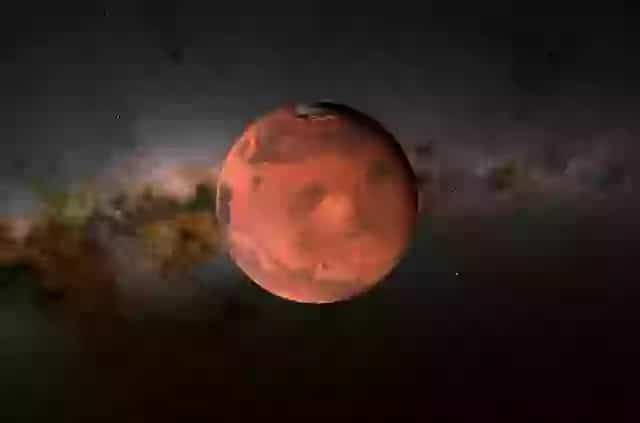Harvard Scientist Claims Ancient Martian Civilization Was Wiped Out by Nuclear War
A bold theory from a Harvard-affiliated scientist suggests that an ancient civilization on Mars may have been destroyed by a massive nuclear attack.
Dr. John Brandenburg first introduced this idea back in 2011. He claims that a highly advanced Martian society — which he refers to as the “Cydonians” and “Utopians” — was wiped out in a planet-wide catastrophe. According to him, evidence of the disaster can still be seen on the Martian surface today.
One of Brandenburg’s key arguments is that Mars’ distinctive red color might not just be due to iron oxide, as traditionally believed, but could also be the result of radioactive fallout from a huge thermonuclear explosion. He further points to chemical elements detected on Mars that resemble those left behind at nuclear test sites on Earth.
Skeptics, however, argue that there’s no hard evidence — like a blast crater — to support his claims. They also note that Brandenburg’s paper was published in a relatively obscure scientific journal, which has made many in the scientific community wary of his conclusions.
Still, the theory has gained renewed attention thanks to social media. On the popular Danny Jones Podcast (with over a million subscribers), philosopher and science fiction author Jason Reza Jorjani discussed what he called Brandenburg’s “alarming evidence” of past life on Mars.
“Every planet has its own mix of isotopes,” Jorjani explained, “but the ratio of Xenon-129 on Mars is very unusual — unlike anything else in our solar system.” Xenon-129, a stable isotope released during nuclear fusion, has been found in higher concentrations in the Martian atmosphere, which Brandenburg sees as a potential sign of past nuclear detonations.
NASA has detected elevated levels of a similar isotope, Xenon-126, in the Cydonia region of Mars. However, the agency attributes these findings to natural causes — like surface impacts or gases escaping from rocks and soil — and not evidence of ancient warfare.
Still, Jorjani supports Brandenburg’s theory. He claims the specific presence of Xenon-129 is a well-known marker of thermonuclear explosions. He also connects Brandenburg’s research to a declassified CIA report that touched on the idea of intelligent life once existing on Mars — a civilization that may have collapsed due to internal corruption.
Jorjani even referenced a 1984 CIA operation involving “remote viewing” — a kind of psychic exploration — in which intelligence contractor Joe McMoneagle was allegedly asked to describe Mars’ past. The session was conducted at the Monroe Institute as part of a broader government experiment.
NASA May Have Accidentally Killed Martian Life in the 1970s, Scientist Suggests
In a separate theory, another scientist says NASA might have unintentionally wiped out microbial life on Mars during one of its early missions.
Dirk Schulze-Makuch, an astrobiologist at the Technical University of Berlin, believes that when NASA first landed on Mars in the 1970s, the space agency’s testing methods could have unknowingly destroyed any native life.
According to him, the spacecraft may have exposed Martian microbes — if they existed — to harsh conditions they couldn’t survive, effectively erasing the chance to discover living organisms on the Red Planet.
Did We Accidentally Kill Life on Mars? One Scientist Thinks So
For decades, scientists have been on the hunt for extraterrestrial life — a quest that fuels both science fiction and real-life space exploration. But according to one astrobiologist, we might have unknowingly destroyed alien life on Mars nearly 50 years ago.
Dr. Dirk Schulze-Makuch, a researcher at the Technical University of Berlin, believes that NASA’s Viking landers — which touched down on the Red Planet in 1976 — may have accidentally wiped out Martian microbes during their experiments.
At the time, NASA designed its tests based on Earth-like biology, assuming Martian life would also rely on liquid water. The Viking missions mixed water and nutrients with Martian soil samples to look for signs of life. But Schulze-Makuch argues that this could have been a fatal mistake.
In a piece published in Nature, he explained that life in extremely dry environments — like Mars — might depend on salt deposits to draw moisture from the atmosphere, not liquid water. “The experiments performed by NASA’s Viking landers may have accidentally killed Martian life by applying too much water,” he wrote.
Instead of “following the water,” which has long been NASA’s strategy, Schulze-Makuch believes future missions should focus on finding hydrated salts and other hygroscopic compounds — materials that naturally absorb moisture from the air — as potential clues to life.
“It’s time for another life detection mission,” he told Space.com, emphasizing that today’s scientists have a much better understanding of Mars than they did in the ’70s. “We need several independent life-detection methods to produce more convincing data.”
NASA Discovers Strange ‘Marble Rock’ on Mars — And Scientists Are Baffled
NASA’s Perseverance rover recently stumbled upon something completely new on the Martian surface — a bizarre rock packed with tiny spherical marbles.
The strange formation was found along the rim of Jezero Crater, an area believed to have once held water. The rock is covered with millimeter-sized spherules — tiny, rounded pebbles — some of which have odd shapes and even small holes.
“This rock is unlike anything we’ve seen before,” said Alex Jones, a PhD student at Imperial College London. “Understanding where these features came from is key to unraveling Mars’ geological history.”
Theories vary. Some scientists think these spherules may have formed from quickly cooling lava or the aftermath of a meteorite impact. Others suggest they could be remnants of ancient water activity deep underground.
Either way, they may hold clues to what Mars was like billions of years ago — when it transitioned from a warmer, wetter planet to the cold, dry desert we see today.
Declassified CIA Files Reveal ‘Dying Elder Race’ Seen on Mars
If this sounds like an X-Files episode, you’re not far off — but this story comes straight from declassified CIA documents.
Back in 1984, the CIA conducted an experiment involving “remote viewing” — a controversial practice where psychics claimed to mentally explore distant places and times. In this case, a subject was reportedly asked to “visit” Mars a million years in the past.
The report, labeled “Mars Exploration May 22, 1984,” describes the subject witnessing massive pyramids, harsh storms, and “very tall, thin” people — described as an “ancient race” on the brink of extinction.
“They’re very philosophical,” the subject claimed. “They’re looking for a way to survive and just can’t.”
According to the account, most of this Martian civilization fled the planet, while the rest were left behind as society collapsed.
The CIA’s remote viewing program — code-named STARGATE — was eventually shut down in 1995, reportedly due to lack of reliable results (and, according to one story, a psychic being more interested in a burrito than Mars).
Still, the documents remain a fascinating — and bizarre — footnote in America’s long-running fascination with alien life.
NASA Shares Clearest Photos of Mars Ever Taken — And People Are Stunned
NASA has released the clearest images of the Martian surface ever captured — and the visuals have captivated space fans across the internet.
Taken by the Curiosity rover in December 2015, the photos showcase wind-sculpted ripples in the dark sand of Namib Dune, located in the Bagnold Dune Field.
NASA explained that the larger ripples, spaced about 10 feet apart, are unlike anything seen on Earth. The images were brightened to make the patterns more visible, revealing a landscape both alien and eerily beautiful.
Online, viewers have been fascinated by the unique dune shapes — and the science behind them. One Reddit user noted that Mars’ lower gravity likely makes its sand piles steeper and “pointier” than those on Earth. Another joked, “Ah, the Martian Swamps of Chocolate Mousse. So inviting this time of year.”
Others simply called the landscape “mesmerizing” and “otherworldly,” with one user on X (formerly Twitter) wondering, “What strange life forms might be hiding underneath these dunes?”
As NASA continues its push to eventually send humans to Mars, these images offer a striking preview of what awaits us on the Red Planet.
